White cabbage is one of the most popular vegetables. It is valued for its excellent taste and ability to be stored fresh for a long time (from 2 to 9 months). It is quite easy to care for and in both southern and northern regions cabbage is grown in open beds.
| Content:
|
Cabbage varieties
According to the ripening period, white cabbage is divided into early, middle and late. The ripening period is counted from the formation of developed cotyledon leaves to the formation of a strong head of cabbage. But another 10 days are added to it, during which the seedlings take root after planting in the ground.
Early
Ripening time is 90-100 days from full germination. In the southern regions it is ready at the end of June. In the middle zone and in the north-west, it is unrealistic to obtain heads of cabbage of even the earliest varieties at this time. Early cabbage can be stored for no more than 60-80 days.
- June – ripens on the 62nd day after planting in the garden and produces light green heads of cabbage weighing up to 2–2.4 kg.
- Dumas F1 – a high-yielding hybrid, prone to forming forks weighing more than 1 kg, resistant to cracking, heat and many cabbage diseases. The fruits are ready for harvest 2 months after transplanting the seedlings to the garden bed.
- Zarya MS – a product of Czech selection is distinguished by tasty vegetables arranged in a spreading rosette. The average weight of the heads is 1.6–2.1 kg.
- Express F1 – forms juicy and tasty heads of 1200 grams with crispy leaves. The conical hybrid matures in 80 days
Mid-season varieties
Ripening period is 100-110 days. With early sowing in the Non-Black Earth zone, the heads of cabbage are ready 10-14 days later than in the south. Used fresh, for cooking, pickling and pickling. It is stored for 3-6 months.
- Hope – a high-yielding variety, the fruits are round, weighing up to 3 kg, with proper care they slightly exceed the limit of up to 3.4 kg.
- Caporal F1 - a drought-resistant hybrid that produces fruits up to 5 kg; the minimum weight of the heads is rarely less than 2 kg.
- Dobrovodskaya – its heads do not crack when overripe, are stored in the beds for a long time, and suffer minimal losses due to diseases. The maximum weight of one fork is 8–9 kg.
- Stolichnaya - the average size of the head ranges from 2.4 to 3.4 kg. The taste and presentation are excellent; the forks are stored until spring without loss of attractiveness and vitamin reserves.
Late
Late varieties of cabbage are grown in both southern and northern regions. Ripening period is 140-160 days. It can be stored for up to 9 months; at a stable temperature it can be stored for 10 months.
- Aggressor – the growing season is 120 days after the formation of seedlings. The bush does not require special care and can easily tolerate drought and poor soil.
- Amager – cabbage is good for pickling, preparing canned salads and fresh dishes. The bush forms heads up to 5 kg.
- Kolobok – a medium-sized variety with 5-kilogram heads, suitable for universal use. The heads of regular round shape ripen in 150 days.
- Sugarloaf – grows up to 3.6 kg, has a rich vitamin composition, contains sugars and acids that persist for 8 months.
The sooner you sow the seeds, the sooner you can get a harvest. Early varieties in the southern regions are sown in late February-early March in a greenhouse under cover. In the northern regions and middle zone, the earliest sowing time is early to mid-April. Due to such a late date, early varieties form a head of cabbage at the same time when mid-season varieties are ready, therefore, in the Non-Black Earth Region, early (June) cabbage is practically not grown.
Mid-season varieties in the middle zone are sown in 2 terms: at the beginning of April, in order to have heads of cabbage by the beginning of August, and at the end of the month, then the cabbage will ripen in early September. In the south, you can also sow in 2 terms: at the end of March and the end of April, in order to receive products from mid-July to September.
Late varieties in the middle zone are sown in late March-early April, then the cabbage will be ready by mid-October. In the south, sowing is carried out from the beginning of April until the end of the month. There it can grow until mid-November.
Cabbage can be grown in two ways:
- Through seedlings
- Sowing seeds directly into the ground
Growing cabbage through seedlings
White cabbage is grown mainly through seedlings. Cabbage seedlings need to grow in cool conditions, so they are easier to grow in a greenhouse. Early and medium varieties are sown in the greenhouse as soon as the soil warms up to +5°C. However, you can sow at +2°C, but then the first shoots will appear after 14 days, and at 5-6°C after 10 days.
The greenhouse should be warm enough for the seedlings to grow quickly. Although the seedlings can withstand short-term frosts down to -4°C (several hours), in cold weather the seedlings develop slowly. In case of cold nights, the crops are covered with film, which is removed after germination.
Indoors, seedlings are grown exclusively on the lightest and coldest windowsill. She needs a lot of light and relative coolness. Violation of one of the conditions leads to stretching and lodging of seedlings.
Before sowing, seeds are disinfected by keeping them in a solution of potassium permanganate, heated to 50-52°C for 10 minutes, then cooled and dried. Sow dry seeds in boxes.
To increase ripening time, early cabbage can be sown several times with an interval of 7-10 days.
At home, 10-12 days after germination, seedlings dive into pots, deepening them to the cotyledon leaves. Then they put it in the brightest and coldest place. In the greenhouse, seedlings are not planted until they are planted in the ground.
The seedlings are watered regularly to keep the soil moderately moist. The hypocotyledonous knee should not be allowed to stretch. This happens either due to low light, then the seedlings are placed on a balcony or in a greenhouse under film, or due to strong density, then the seedlings are thinned out and loosened.
More information about growing and caring for cabbage seedlings read this article ⇒
After the appearance of the third true leaf, the seedlings are fed with the complex fertilizer Malyshok, Uniflor and the root growth stimulator Kornevin.
Before planting in the ground, cabbage is watered with copper sulfate (1 tbsp/1 l of water) to destroy clubroot spores.
Site selection and soil preparation
All cabbage (including white cabbage) is very light-loving. If it was grown even in partial shade, the head may not set. Although the culture loves moisture, it cannot tolerate places where water stagnates. It will not grow on sandy and peaty soils.
Cabbage requires a slightly alkaline or, in extreme cases, a neutral reaction environment (pH 6.-7.5), rich, moderately moist soil. Therefore, a bright, sunny place where there is no stagnation of water is chosen for the culture.
The site is prepared in the fall by digging up the soil using a spade, while simultaneously adding humus or half-rotted manure 3-4 kg per m2.
On acidic soils, lime fertilizers must be applied. Lime also acts as a deoxidizing agent and protects cabbage from clubroot.If you plan to plant cabbage next year, then fluff is added to speed up deoxidation. The application rate depends on the acidity of the soil:
- pH 4.5-5.0 - 300-350 g;
- pH 5.1-5.5 - 200-250 g;
- pH 5.6-6.4 - 50-80 g; Such soils do not need to be limed in the fall, but rather add lime directly to the hole.
Lime is never applied simultaneously with fresh or even half-rotted manure, since the reaction results in the formation of compounds that are inaccessible to plants.
Instead of lime, you can add ash 1 cup per m2. However, summer residents only apply manure in the fall, and add the remaining fertilizers directly to the hole when planting. Although, in the fall you can add simple superphosphate and potassium sulfate 2 tbsp each. l per 1 m2.
Transplanting
By the time of planting in open ground, strong seedlings of white cabbage should have a well-developed root system, stems 8-10 cm high from the root collar to the heart and 4-6 mm thick; The height of the plants from the root collar to the tips of the leaves is 20-25 cm.
Early cabbage should have 6-7 unfolded leaves, middle and late varieties should have at least 4 leaves. More frail seedlings are rejected. The age of planting in the ground for early varieties is 45-60 days, for the rest 35-45 days.
The timing of planting white cabbage in open ground is crucial for obtaining a high yield.
In the middle zone and in the north, late-season cabbage is planted in open ground in the second ten days of May, mid-season and early cabbage - in the third ten days of May. In any case, the landing is completed before June 5th. Planting at a later date leads to untimely formation of heads of cabbage and reduced yield.
In the southern regions, early cabbage is planted in the ground in early to mid-April.
Landing pattern
Cabbage is usually grown in plots.If planted in ridges, then in one line, otherwise the plants will be crowded. More often they are planted in rows with a row spacing of 50-60 cm and a row spacing of 40-60 cm. Late cabbage with large heads of cabbage is planted at a distance of 50-60 cm from each other and with row spacing of 80 cm.
Before planting on acidic soils, be sure to add 0.5 cups of ash or 1 tbsp to the holes. fluff, you can use calcium nitrate 1 dess. spoon per hole. All fertilizers are sprinkled with soil. The holes are filled to the brim with water, and when it is half absorbed, the seedlings are planted.
If the soil has not been prepared since the fall, then before planting the following is added to each hole:
- 0.3 kg humus
- 1 tsp superphosphate
- 2 tsp nitrophoska
- 2 tbsp. wood ash (if it is not available, use potassium sulfate 1 tbsp per hole).
Cabbage is planted deeper than it grew before, sprinkling the cotyledon leaves with soil. The first true leaves should be on the ground. Immediately after planting, the seedlings are watered again.
In overgrown seedlings, the subcotyledon bends. When planting, the bottom two leaves of such cabbage are torn off, since they will dry out anyway. Overgrown seedlings are also planted without trying to straighten the stem.
Plants should be planted in cloudy weather or in the evening, so that there is no strong evaporation of moisture from the leaves, and the seedlings take root faster.
The bright spring sun causes burns to newly planted seedlings, so they are shaded in the first 2-3 days.
Usually a new leaf appears within a week. If the plants do not take root well, they are watered with the growth stimulator Kornevin.
The seedlings can withstand night frosts down to -4°C without any problems.If the frost was severe or prolonged, sometimes the growth point of young plants freezes, then in cabbage, instead of the only dead growth point, several others develop simultaneously. Instead of one head of cabbage, such plants form 2-4 smaller heads of cabbage, which are not inferior in quality to the others.
Caring for white cabbage
Watering
Cabbage needs abundant watering throughout the growing season. As they grow, the need for water only increases. After planting in open ground, it is watered daily for the first week, and when the soil dries out, loosening is carried out, since the crop does not tolerate soil crust, its roots begin to die.
In dry and sunny weather, cabbage is watered every other day, in hot weather - every day. In rainy weather, if the soil is sufficiently wet, do not water it, but if the soil is dry despite precipitation, water as usual.
The crop requires maximum water during the head setting period. Therefore, intensive watering for early cabbage is carried out in June (in July in the middle zone), for late cabbage - in August.
A month before harvesting, watering is sharply reduced, and 14 days is stopped altogether, otherwise the heads of cabbage may crack. Early varieties, when tying a head of cabbage, are watered once every 4-6 days, spending 0.5-1 liters, depending on the weather. Late cabbage is not watered at all during rains; in dry weather - once a week.
The culture prefers ordinary cold water from a well or from a well. Warm water is poured over it only when there is no way out.
Soil deoxidation
Cabbage needs to constantly maintain a pH of 6.5-7.5. It is impossible to deoxidize the soil once. In the northern regions, soil acidification is constantly occurring.A single application of lime or ash does not correct the situation. Large doses of lime bind phosphorus and potassium and plants experience their deficiency.
Therefore, every 2 weeks, immediately after watering, the plants are watered with infusion of ash (1 cup per 10 liters) or milk of lime (2/3 cup of dolomite flour per 10 liters). Apply 1 liter per plant at the root. In regions with alkaline and neutral soil, additional application of deoxidizers is not required.
Loosening
After any watering, as soon as the soil dries, the cabbage plot is loosened. Loosening is carried out especially deeply and thoroughly on dense clay soils. The first loosening is done to a depth of 5-7 cm, all subsequent ones to 15-25 cm. In dry weather, loosening is shallow, during prolonged rains it is deeper.
Cabbage is also spudded. The quantity and depth of hilling depends on the length of the stump. Varieties with a long stump are hilled 2 times, otherwise it will bend and the head of cabbage will fall to the ground. Even in dry summers this leads to rotting of the head of cabbage.
The first hilling of early varieties is carried out 15-20 days after planting the seedlings, medium and late varieties - after 25-30 days. The next hilling is done at the beginning of tying the heads of cabbage. You need to leave 3-4 cm of the stump above the ground.
Feeding
Cabbage carries a lot of nutrients. Throughout the growing season, it requires macro- and, especially, microelements.
Throughout the entire growth period, cabbage consumes large quantities of nitrogen and potassium, and slightly less phosphorus. Microfertilizers are constantly required in minimal quantities, and during the period of head setting, the need for them increases.
When growing cabbage on acidic soils, avoid the use of physiologically acidic fertilizers (double superphosphate, Kemira).Feed the cabbage plot weekly, alternating organic and mineral fertilizers.
Bird droppings are added from organic matter (0.5 liters per 10 liters of water), weed infusion (2 liters per 10 liters of water) or manure (1 liter per bucket). The culture responds well to the application of fresh manure infusion.
If, after planting in the ground, the seedlings do not take root well, then they are fed with the root growth stimulator Kornevin or Etamon. Although the latter preparation is recommended for tomatoes and peppers, it is also excellent for cabbage. If the seedlings are frail and overgrown, they are sprayed with Aminazole; it is very effective and the cabbage plot takes on a healthy appearance within 2-3 days.
Mineral fertilizers include azophosphoska, nitrophoska, ammonium nitrate, calcium nitrate or microfertilizers with sufficient nitrogen content:
- Intermag cabbage garden
- Uniflor-micro
- Agricola
Ash is a universal fertilizer and its infusion is applied once a month (1 cup per bucket). But it does not contain nitrogen, so the following fertilizing is done with organic matter.
During the period of setting heads, the dose of nitrogen in the fertilizing is reduced and the addition of potassium is increased. Otherwise, plants will accumulate nitrates in their leaves. At the same time, the need for microelements, especially boron, increases greatly. If there are no microfertilizers, then it is advisable to feed the cabbage plot with boric acid (2 g of powder per bucket of water).
The last feeding of early varieties is carried out 20-25 days before harvesting, late varieties - 30-35 days.
All fertilizing is carried out at the root. Foliar feeding is not done, since the cabbage will tie up everything that remains on the leaves (dry substances or stains from processing that were not washed off by the rain).
Harvest
Early cabbage is harvested when the heads are ready.The finished heads of cabbage should be firm to the touch, and at the top they become somewhat lighter (a yellow spot appears). In mature heads of cabbage, the lower leaves begin to turn yellow.
Early varieties are harvested selectively as the heads of cabbage are ready. Middle and late ones are often harvested at the same time. Ready-made heads of these varieties can be kept in the garden a little longer than the readiness date. But harvesting too early leads to the withering of first the covering leaves, and then the entire head of cabbage, since the leaves are not yet ripe.
When harvested late, the heads of cabbage become overripe, burst and become unsuitable for storage.
If the heads of cabbage are intended for pickling or fresh consumption, then they are left in the garden until the temperature at night is -6°C. Then they acquire a special taste. This cabbage is ideal for pickling. After such a frost, the head of cabbage is left in the garden until it thaws to the roots (3-5 days) and only then is cut off. If the head of cabbage is cut before the roots thaw, it will quickly rot.
If the cabbage is intended for storage, then it is advisable to remove it before severe frosts, or at least the next day after the first. If it remains in the garden for a long time in frost, it will become unsuitable for long-term storage; it will have to be used no later than 2 months after harvesting.
The critical temperature for late cabbage is 6°C. If it was in the garden in such frost, it will not be stored.
General recommendations for harvesting cabbage for storage.
- Mid-season - +3-6°С during the day and 0°С at night.
- Late ripening - 0°C during the day and -6°C at night.
During prolonged autumn rains, even unripe heads of cabbage can crack. To prevent this, the cabbage plot is deeply loosened, cutting off any roots that come across.Or the stump is turned 45° in the ground, which also destroys some of the roots. Then the flow of water into the head of cabbage will be greatly reduced and it will remain intact.
Harvesting of grown products is carried out in dry weather. The heads of cabbage are cut with a stump 3-4 cm long. Or the cabbage is pulled out with a pitchfork, and then the stump is cut off. In early varieties, if you leave the stalk with the lower leaves in the ground, you can get a second harvest of small heads of cabbage. To do this, the stumps are hilled up and fed with manure.
Excess leaves are broken off from cut heads, leaving 3-5 outer leaves. The harvest is laid out to dry for 4-5 hours. On a sunny day, the heads of cabbage are placed in the shade under a canopy. But if there has been no precipitation for 4-5 days before harvesting, the cabbage is not dried, but immediately put away for storage.
Storage
You can store grown cabbage in bulk or in boxes. The optimal storage temperature is 0 - +1°C. Do not allow the temperature to rise above 5°C or drop to -2°C.
The humidity in the storage room should be 85-95%. If the heads of cabbage have not ripened well, they are hung by the stumps, each separately, they should not touch each other. This will make it easier to identify when damage has begun and quickly use rotten plants.
In plastic bags in the refrigerator, cabbage quickly begins to rot because the temperature there is too high. And during storage, plants breathe intensely, as a result, condensation appears in the bag, and the humidity reaches 99%.
If the cabbage begins to spoil, you can dry it. Drying this vegetable is not popular in our country, but it is stored perfectly and its taste is practically no different from fresh.For drying, only healthy leaves are used, which are crushed into strips and dried in dryers or in the oven at a temperature of 85°C.
When drying in the oven, place baking paper on a baking sheet to prevent the cabbage from sticking to it. To remove excess moisture formed during drying, turn on the convection mode or open the oven slightly. Store dry cabbage in glass jars and bags.
Table. The main reasons for poor preservation of cabbage
| Cause | Consequence | What to do |
| Mid-ripening and late varieties were exposed to temperatures of -6°C and below for more than two nights. | The crop begins to rot within 2 months after harvesting | Ferment or use fresh |
| Overfeeding with nitrogen. During the establishment period, the crop was given more nitrogen than potassium | The head of cabbage is not dense enough. During storage, it becomes even looser, dries quickly or rots. | The harvest is processed as quickly as possible |
| Unsuitable variety | Only late varieties are stored well. Early ones last up to 2 months, middle ones 3-4 months | The harvest is quickly processed, used fresh or dried |
| Early cleaning | The heads of cabbage are immature and there is an active metabolic process in them. | Processing and drying |
| Non-compliance with temperature and humidity conditions | The occurrence of rot on leaves and condensation in storage | Bring storage conditions into compliance with the standard. Hang the heads of cabbage or lay them out separately from each other so that they do not touch each other. |
Heads of cabbage can be stored not only in the cellar at the dacha, but in winter in the apartment on the balcony. The cabbage is placed in bags that are not tied, allowing excess moisture to evaporate. In severe frosts, the crops are covered with old blankets, pillows, etc. At temperatures below 30°C, the heads of cabbage are brought into the room.But you can keep them warm for no more than 2 days, otherwise they will begin to wither.
Growing without seedlings
The seedless method of growing cabbage is more relevant for the southern regions, although it is sometimes used in the northern regions. You can sow cabbage in the ground when the soil warms up to 5°C, and the air temperature at night is not lower than 2°C. Sowing of late and early varieties is carried out as early as possible: in the south in the first ten days of April, in the north at the end of the month. Sowing is completed before May 5. Mid-season varieties can be sown until May 15.
2-3 seeds are sown per hole. When shoots appear, excess weak plants are removed, leaving one.
In cold weather and slightly warmed soil, seedlings appear after 10-12 days, in warmer weather after 3-5 days. To speed up the emergence of seedlings, the soil is spilled with boiling water twice before sowing, and after sowing it is covered with covering material.
Black film or dark spunbond is most suitable, but in the absence of these, you can use any one. As soon as the shoots appear, the spunbond can be cut and left under the plants. It reliably protects the cabbage plot from cruciferous flea beetles.
In cold weather, the crop can additionally be covered with covering material. The optimal temperature for cabbage growth is 17-20°C. It can withstand the cold without problems, but it grows slowly, so it is covered to speed up its growth. When the temperature rises, the covering material is removed and the plot is left open even overnight, if there is no frost.
Caring for seedless cabbage is the same as for regular cabbage grown through seedlings. Growing without seedlings is convenient because it frees up time and effort for other work and reduces planting time.
How to grow cabbage from your own seeds
You can grow cabbage from your own seeds, but it will take 2 years.
Cabbage - This is a biennial plant and seeds appear only in the second year of cultivation. To get them, you need to choose a queen cell.
Queen cell - this is the head of cabbage that best matches the variety. He must be strong, big, healthy.
Kochan - These are rolled leaves attached to a stalk-stem. In the axil of each leaf there are buds, from which fruiting shoots appear in the second year of cultivation. You can leave both the head of cabbage with roots and the stump with roots on the mother liquor, leaving the lower rosette leaves.
If a stump is left on the mother liquor, then the head of cabbage is cut off, leaving the lower leaves. The remaining stump is dug up with roots and placed in storage.
If you leave the mother plant with a head of cabbage, then it is not cut down, but dug up along with the roots and placed in storage.
The mother liquor is dug up before the first frost. The root is wrapped in a damp cloth and hung in storage or placed in a box. The queen cell is stored separately from the rest of the heads of cabbage. If the mother plant is subject to severe frost, it is dug up after a few days when it thaws.
No light should enter the storage, and the temperature should be maintained at 0-+1°C. If it is too hot in the cellar, the mother plant will not go through a period of rest and will not establish generative organs. When planted in the spring, it will produce many leaves but no pods or seeds.
It is more difficult to preserve the stump of early varieties, since the queen cells of these varieties, like the heads of cabbage, are not stored. To do this, dig up the plant, cut the stump completely from the head and store it in the cellar at a temperature of 1-2°C until autumn. In the fall, it is planted in a pot and continues to be stored in the cellar.In this form, the mother plant takes root in the pot and is well preserved until spring. In the spring it is transplanted into open ground.
Vernalization
A month before planting, the temperature in the storage is increased to 5-6°C and the light is slightly increased. Carefully inspect the root and remove all rotten and dried roots. If a head of cabbage is left on the queen cell, then most of it is cut off, leaving the stump with the buds. The head of cabbage is sharpened into a cone in the form of a spear tip. Its diameter should be no more than 20 cm.
Queen plants ready for planting (both stumps and former heads of cabbage) are brought into the light to awaken the buds.
Planting and care
The soil for seed plants may be slightly less fertile than for heads of cabbage. Before planting, apply regular fertilizers - ash and superphosphate. Manure is not applied because it provokes leaf growth, which is not necessary in this situation. You can apply a small amount of nitrogen fertilizer.
The seed plants are planted at an angle of 20° at a distance of 60 cm. Planting is carried out at the earliest possible times: in the north - at the end of April, in the south - at the end of March-beginning of April. If it is cold at night, they are covered with covering material. The main criterion is warming the soil to +3°C.
After 15-20 days, if a stump with leaves remains on the queen cell, the leaves are removed so that they do not attract pests. The first feeding is done 20-25 days after planting, watering the seed plants with weed infusion or nitrogen fertilizers.
Next, before flowering, 3 more feedings are done, alternating weed infusion with mineral fertilizers. There should be a slight predominance of potassium in the mineral water. You can add ash instead.
Flowering and seed collection
The testes form long flowering shoots.But the highest quality seeds are obtained only from the central shoots; the lateral ones are cut off, leaving only the strongest ones. Since the flower shoots are tall, they are tied up to avoid breaking or lodging.
The seeds, like ordinary cabbage, are loosened, hilled and watered. If several varieties of seed are grown, they need spatial isolation to avoid cross-pollination. To do this, a plot with one variety is covered with a net or gauze, pressing it tightly to the ground so that insects cannot get through.
If several seeds of different varieties grow at a distance of closer than 500 m from each other, then each one is separately wrapped in gauze or mesh and tied at the bottom.
Pods containing seeds are formed on the shoots. To ensure uniform seed ripening, weak and late shoots are removed. Ripening occurs within 30-45 days.
When the seeds are ready, the pods lighten slightly and crack. When the pods lighten in color, they are collected and stored until fully ripe. They are not kept on the seeds, otherwise they will crack and the seeds will fall into the ground. However, this is not bad either. In the fall, the plot with the seed plants is not dug up, but in the spring you can get early, strong cabbage seedlings.
If the pods were collected in wet weather, they are dried. The collected seeds are stored in paper bags. Growing seed material yourself makes it relatively easy to obtain a large number of high-quality seeds.
The process can be significantly simplified if in the fall, after cutting down a head of cabbage, you leave the stump with rosette leaves in the ground. If it does not freeze, then in the spring it will also begin to grow and produce seeds.
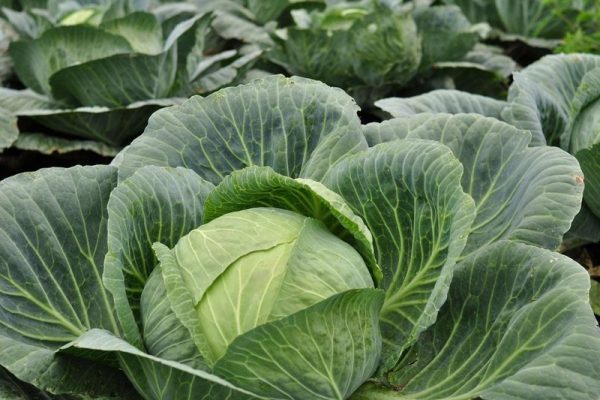
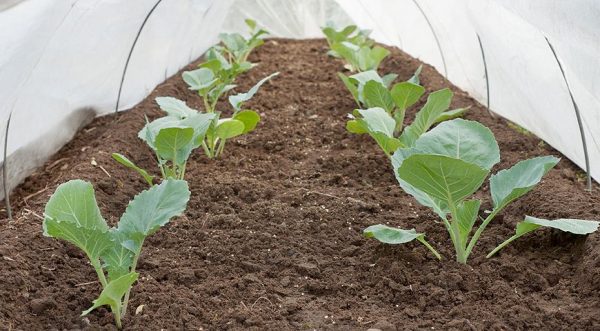
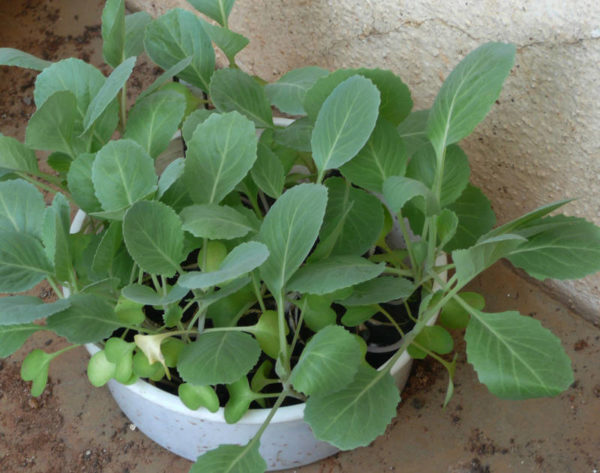
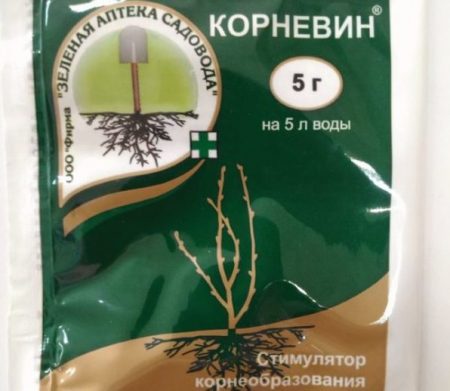
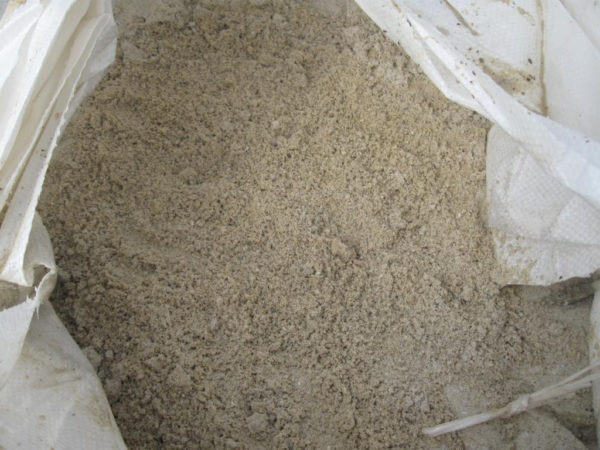
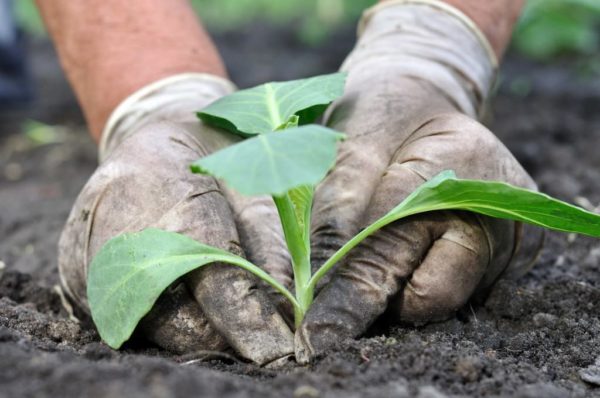
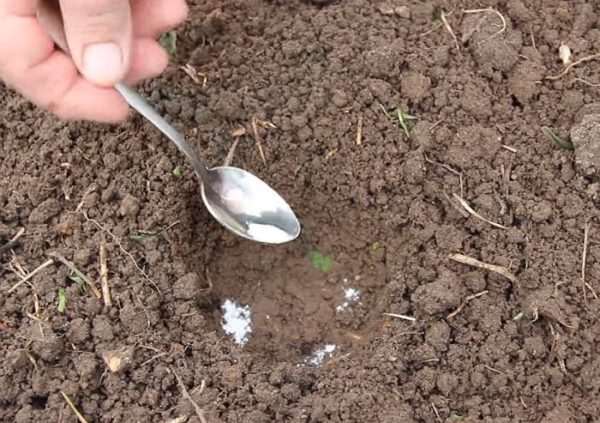
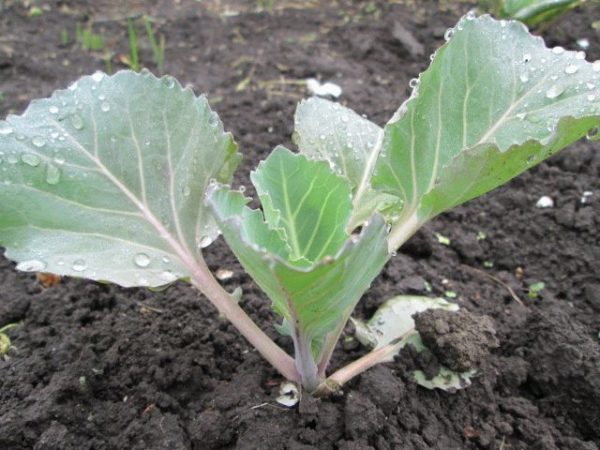
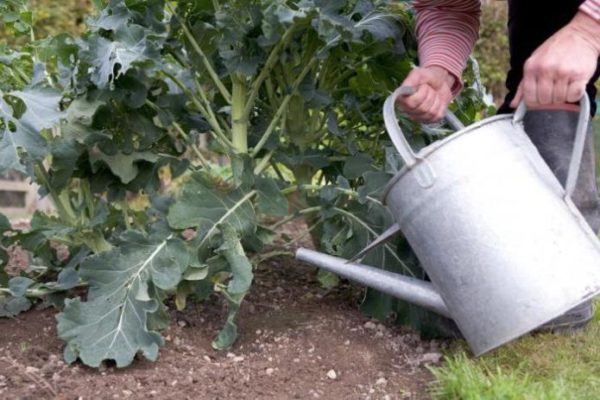
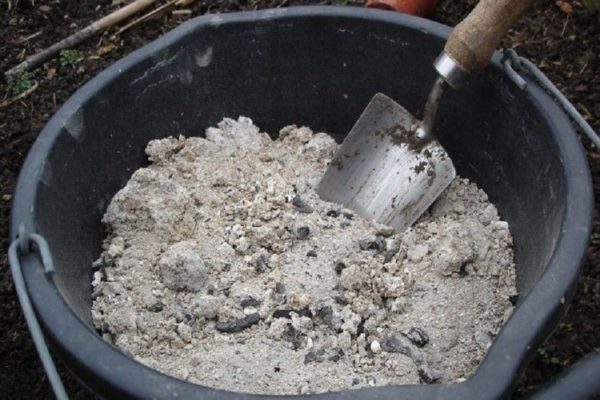
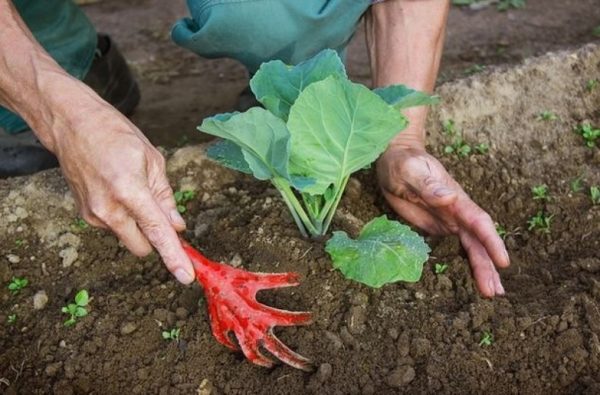
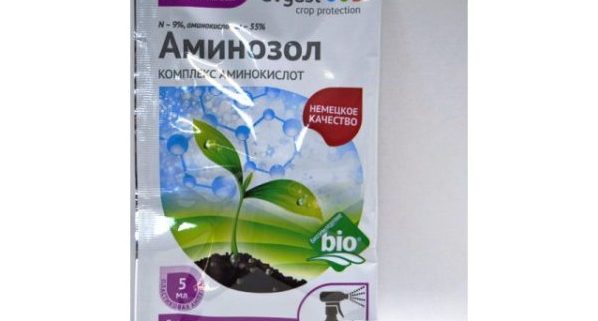
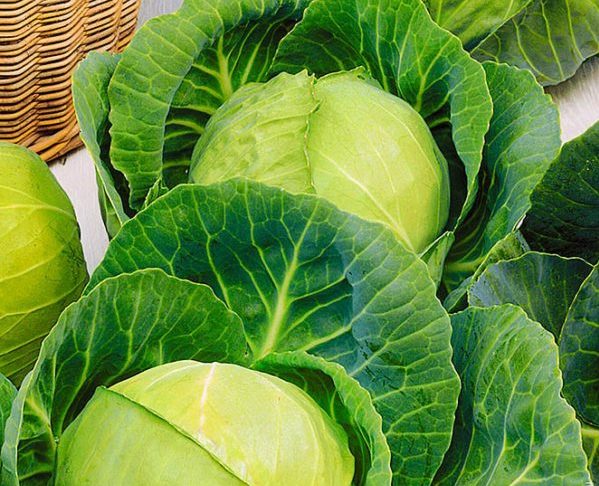
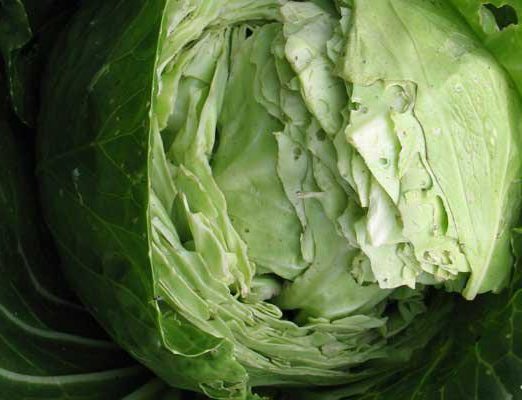
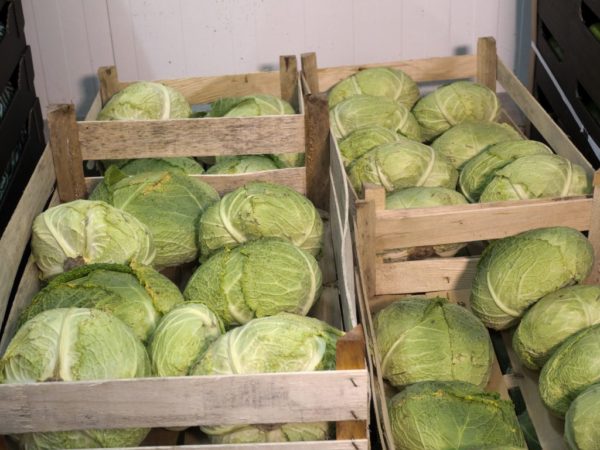
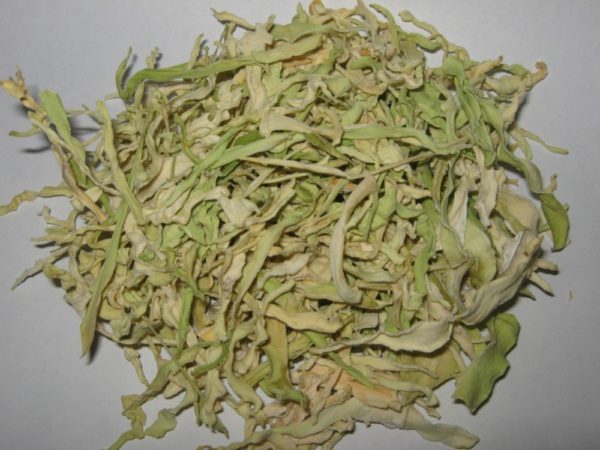
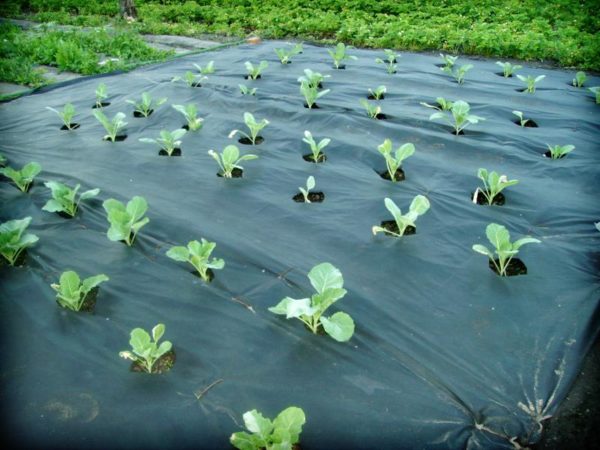
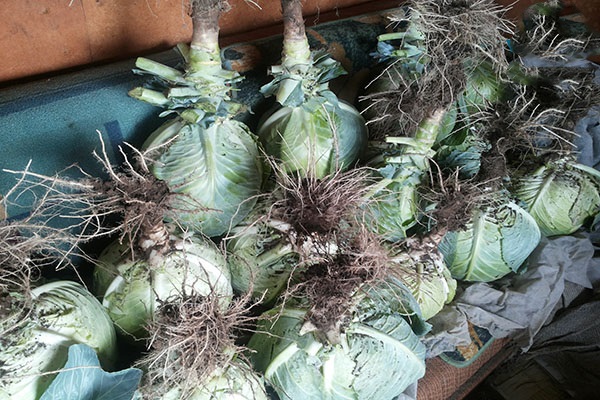
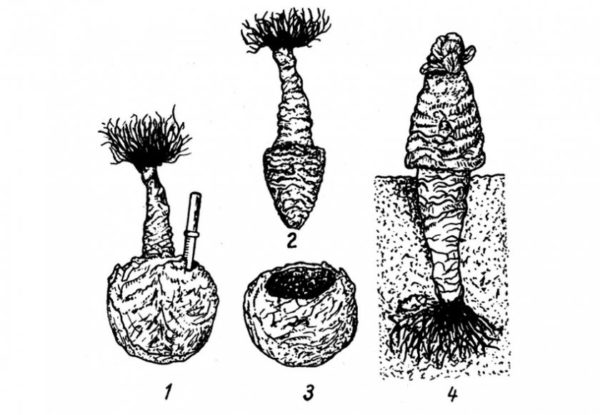
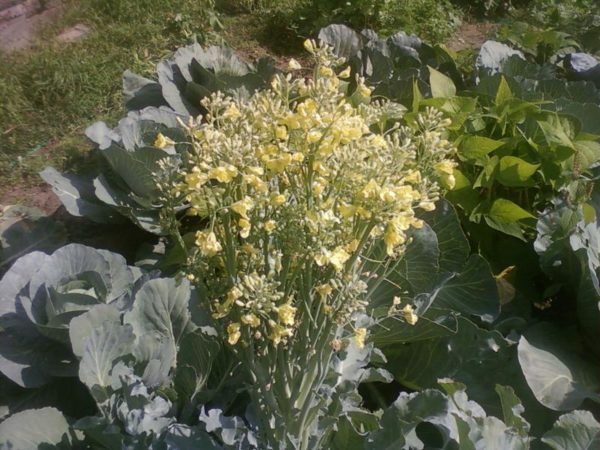
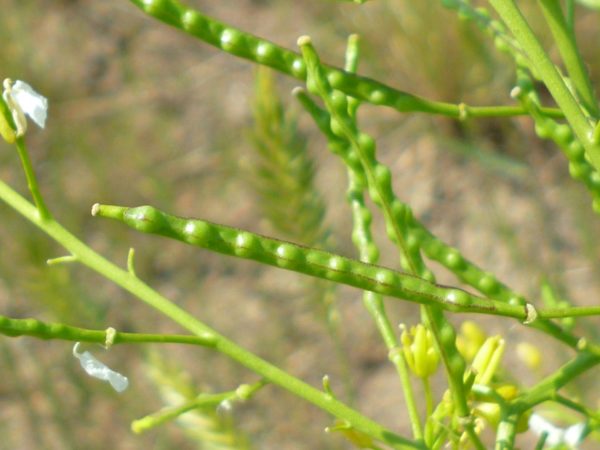

 CUCUMBERS NEVER GET SICK, I'VE BEEN USING ONLY THIS FOR 40 YEARS! I SHARE A SECRET WITH YOU, CUCUMBERS ARE LIKE THE PICTURE!
CUCUMBERS NEVER GET SICK, I'VE BEEN USING ONLY THIS FOR 40 YEARS! I SHARE A SECRET WITH YOU, CUCUMBERS ARE LIKE THE PICTURE! You can dig a bucket of potatoes from each bush. Do you think these are fairy tales? Watch the video
You can dig a bucket of potatoes from each bush. Do you think these are fairy tales? Watch the video
 How our fellow gardeners work in Korea. There is a lot to learn and just fun to watch.
How our fellow gardeners work in Korea. There is a lot to learn and just fun to watch. Eye trainer. The author claims that with daily viewing, vision is restored. They don't charge money for views.
Eye trainer. The author claims that with daily viewing, vision is restored. They don't charge money for views. A 3-ingredient cake recipe in 30 minutes is better than Napoleon. Simple and very tasty.
A 3-ingredient cake recipe in 30 minutes is better than Napoleon. Simple and very tasty. Therapeutic exercises for cervical osteochondrosis. A complete set of exercises.
Therapeutic exercises for cervical osteochondrosis. A complete set of exercises. Which indoor plants match your zodiac sign?
Which indoor plants match your zodiac sign? What about them? Excursion to German dachas.
What about them? Excursion to German dachas.